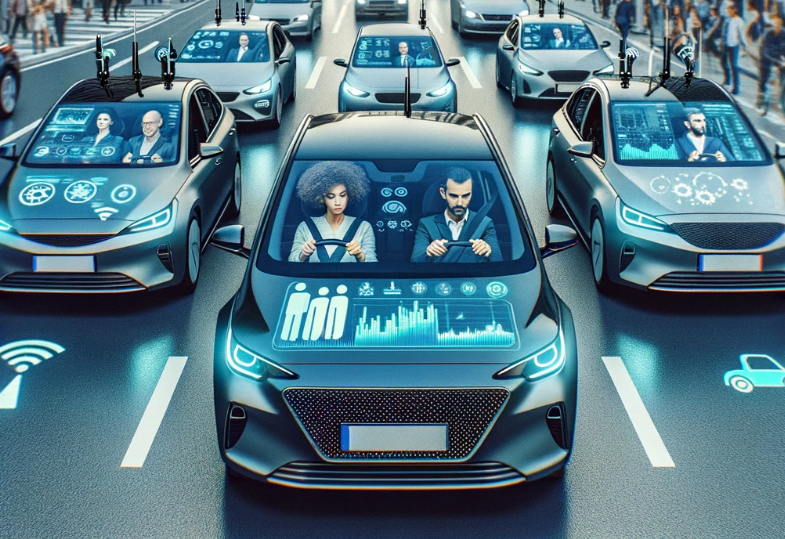The technology utilises a combination of sensors, cameras, and wireless connectivity options like Wi-Fi, radio frequencies, and cellular technologies such as LTE and 5G. However, it's essential to note that the technology is still in its nascent stages. For V2X to reach its full potential, it needs to be widely adopted, and various components need to work in harmony.
One of the most critical aspects of V2X is seamless connectivity. Todd Rigby, director of sales at Rajant, a mobile network infrastructure company, emphasises that "connectivity is really the Holy Grail." The technology relies on wireless mesh networks to manage and maintain broadband connectivity, connecting vehicles to one another and to infrastructure. This is particularly important in industries like mining, construction, and logistics.
Cars equipped with V2X often use a combination of radar, LiDAR, and other sensing technologies. These not only warn drivers of potential collisions but also gather data that can be shared with other vehicles and infrastructure. This multi-layered approach to data collection and sharing is what sets V2X apart from other safety features.
One of the most immediate benefits of V2X technology is improved traffic management. By communicating with traffic lights and other road infrastructure, V2X-equipped vehicles can help optimise traffic flow, reducing congestion and emissions.
In the case of an accident or emergency, V2X technology can provide real-time information to emergency services, potentially speeding up response times and improving outcomes.
V2X is also seen as a critical component in the development of autonomous vehicles. It provides an additional layer of safety and efficiency that is crucial for the widespread adoption of self-driving cars.

The National Highway Traffic Safety Administration (NHTSA) in the United States estimates that V2X technology could save thousands of lives and prevent numerous accidents.
V2X-equipped cars can collect data on traffic conditions and translate it into more fuel-efficient routes. This is not only beneficial for individual drivers but also has broader economic and environmental impacts.
By suggesting faster and more efficient routes, V2X technology can save drivers both time and money.
For V2X to be effective, the sensors involved must be reliable, especially in adverse weather conditions.
As with any technology that gathers and stores data, there's a risk of hacking and data theft.
There are still some regulatory challenges to overcome, particularly concerning the allocation of radio spectrum for V2X technologies.
Many consumers are not yet aware of V2X technology or its benefits, which could slow down its adoption.
By optimising routes and reducing the need for sudden stops and starts, V2X can contribute to significant fuel savings. This is not only beneficial for individual drivers but also has broader economic and environmental impacts.
While the initial investment in V2X technology and infrastructure can be high, the long-term benefits, such as reduced road maintenance and emergency response costs, can offset these.
Despite the challenges, experts like Grant Feek, CEO of TRED, an online car marketplace, are optimistic. Feek believes that as the technology becomes more widely supported and its real-world benefits become apparent, V2X will likely become a compelling feature that car buyers will want.
As V2X technology continues to evolve, several automakers are leading the way by integrating these advanced features into their latest models. Below are some vehicles that are at the forefront of adopting V2X technology:
The 2017 Mercedes E-Class was one of the first vehicles to offer V2X capabilities. It features Car-to-X communication, allowing the vehicle to exchange information with other cars and infrastructure.
Though not a full V2X system, Audi's Traffic Light Information system is a step in that direction. It allows certain Audi models to "talk" to traffic lights, helping to improve flow and reduce idling.
While Tesla has not fully adopted V2X, its advanced Autopilot system lays the groundwork for future integration. With its focus on connectivity and over-the-air updates, Tesla is well-positioned to incorporate V2X features.
Both Hyundai and Kia have announced plans to implement V2X technology in their future models. They aim to offer features like collision avoidance and intelligent traffic navigation.
It's worth noting that the adoption of V2X technology is not limited to luxury vehicles. As the technology matures, it's expected to become a standard feature in a wide range of cars, from economy to high-end models.
In conclusion, V2X technology has the potential to revolutionise the way we think about transportation, making our roads safer, more efficient, and more connected. However, for this vision to become a reality, a concerted effort is needed from all stakeholders, including automakers, regulators, and consumers, to overcome the various challenges that lie ahead.